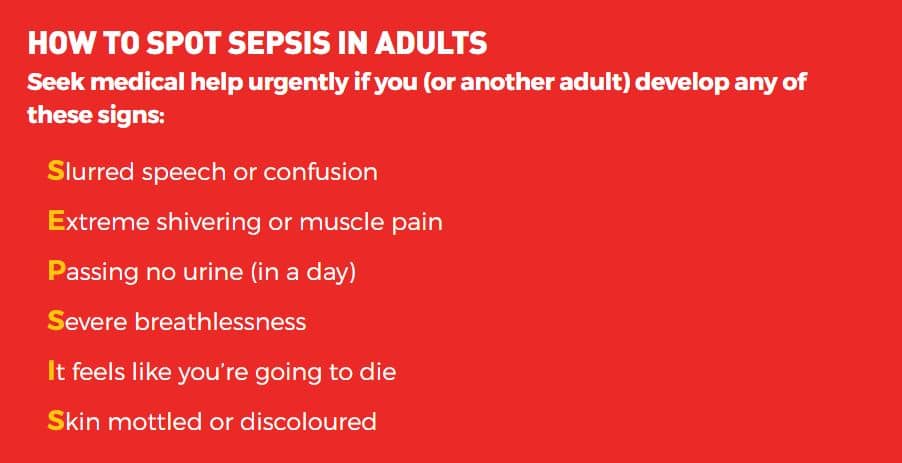World Sepsis Day – what nurses should know
11 September 2019 | Catherine Best, Queen’s Nurse
World Sepsis Day is held annually on 13th September and is an opportunity for us all to unite and educate the world about sepsis, because in the fight against sepsis every second counts.
Attending RCN Congress in May I was reminded of the significant burden that sepsis places on patients, families, carers and friends, leaving a trail of devastation and suffering in its wake. Author and speaker Tom Ray, who spoke so eloquently at the QNI’s conference last year, suffered the devastating consequences of sepsis in 1999. His story is one of courage, hope and determination to survive.
According to the Sepsis Trust, five people die as a result of sepsis every hour in the UK, whilst ¼ of all sepsis survivors suffer permanent, life-changing effects. Sepsis is not simply confined to the UK, but is a global phenomenon and these statistics must be consigned to the annals of global health history.
Extensive work is currently being undertaken to raise awareness of the importance of early recognition of sepsis and the need to respond quickly. The World Health Organization, NHS England, UK Sepsis Trust and NICE are all working actively in this field. In its most recent report, the UK All Party Parliamentary Group on sepsis, reviews the current challenges faced and works collaboratively to drive forward the necessary improvements to help save lives.
The educating of the workforce is crucial to reduce the risk of sepsis and the associated, often tragic, outcomes. Why not take a look at the educational materials available through Health Education England?
Recognising the signs of sepsis
Sepsis is a cruel and life-threatening condition that destroys lives of sufferers and their families. Nurses are in a unique position to recognise associated signs and symptoms and act quickly to save lives.
- Take a detailed history
- Be alert to the Sepsis Six and associated Red Flags
- During your daily work Just Ask: ‘Could it be sepsis?’
- Be courageous: ensure you tell the right person
- Use the right communication tool – SBAR is a good example
- Be assertive – time is of the essence.
Remember, your actions and the actions of those you tell may save someone’s life. Nurses also need to be aware of post-sepsis syndrome as a potential complication, when supporting the discharge of those who have recovered from sepsis.

Raising awareness
So nurses, if you do just one more thing this year, engage in the 2019 sepsis campaign. The Global Sepsis Alliance has created all the resources you need to make 2019 the year that we as nurses, work collaboratively to assign sepsis to the annals of history. Handwashing continues to be one of the simplest of steps to saving lives. Why not incorporate this into your campaign?
If every nurse and every allied healthcare professional in the UK on 13th September did just one thing to raise awareness of sepsis, whether talking to your colleagues, your patients and their families, or simply taking to social media, we can make a difference. Of course, as with many such campaigns, this practice should not just be for one day, but every day.
By reading this blog, and the associated links you are contributing to your revalidation, and by completing a reflective account, you are demonstrating your learning and its application to practice.
Catherine Best, Queen’s Nurse

 Back to Blog
Back to Blog